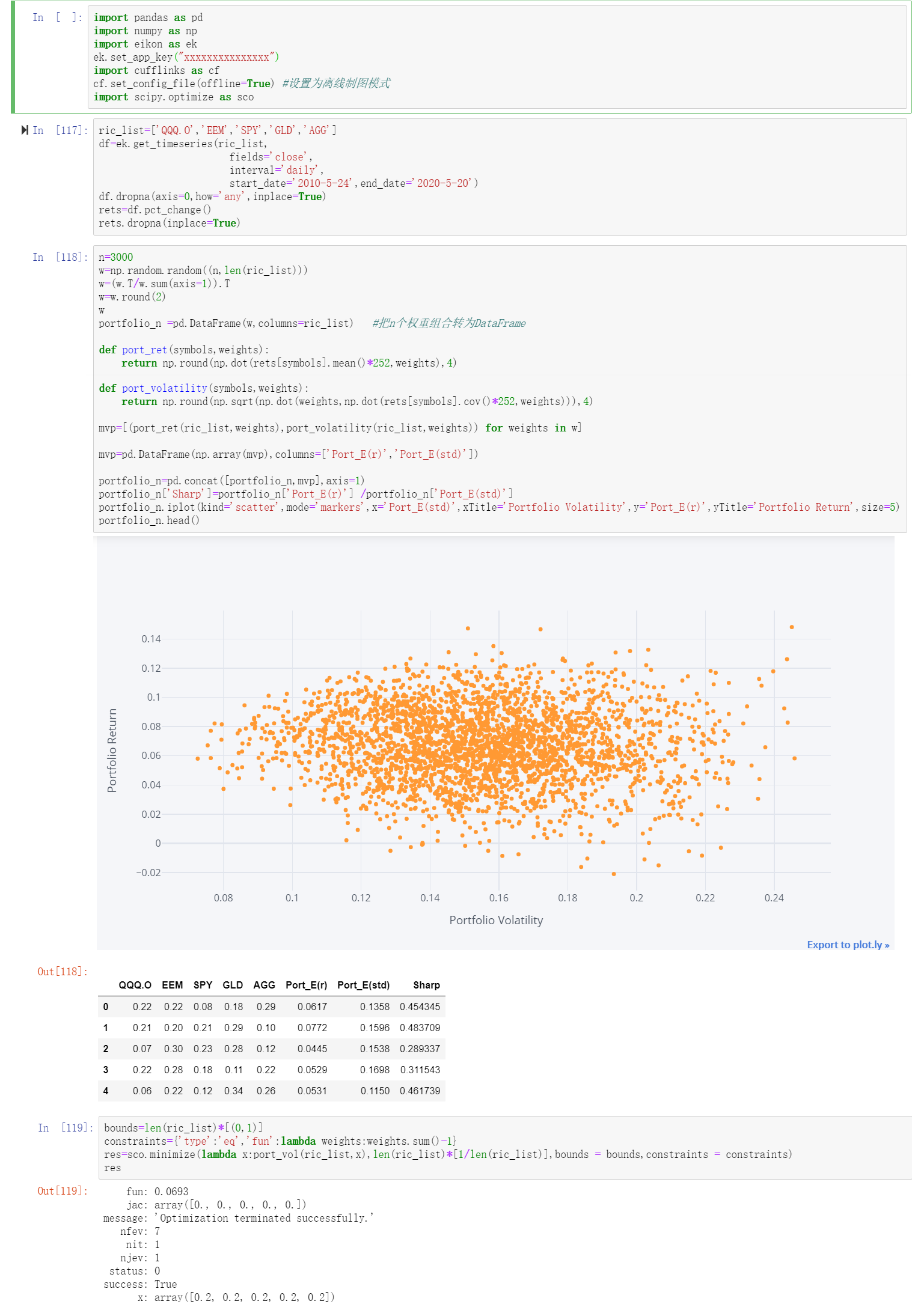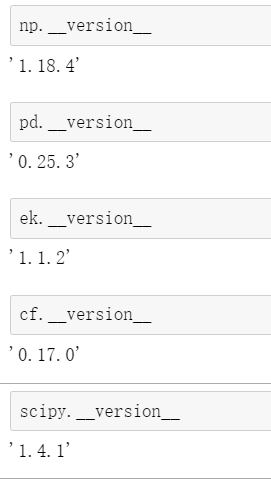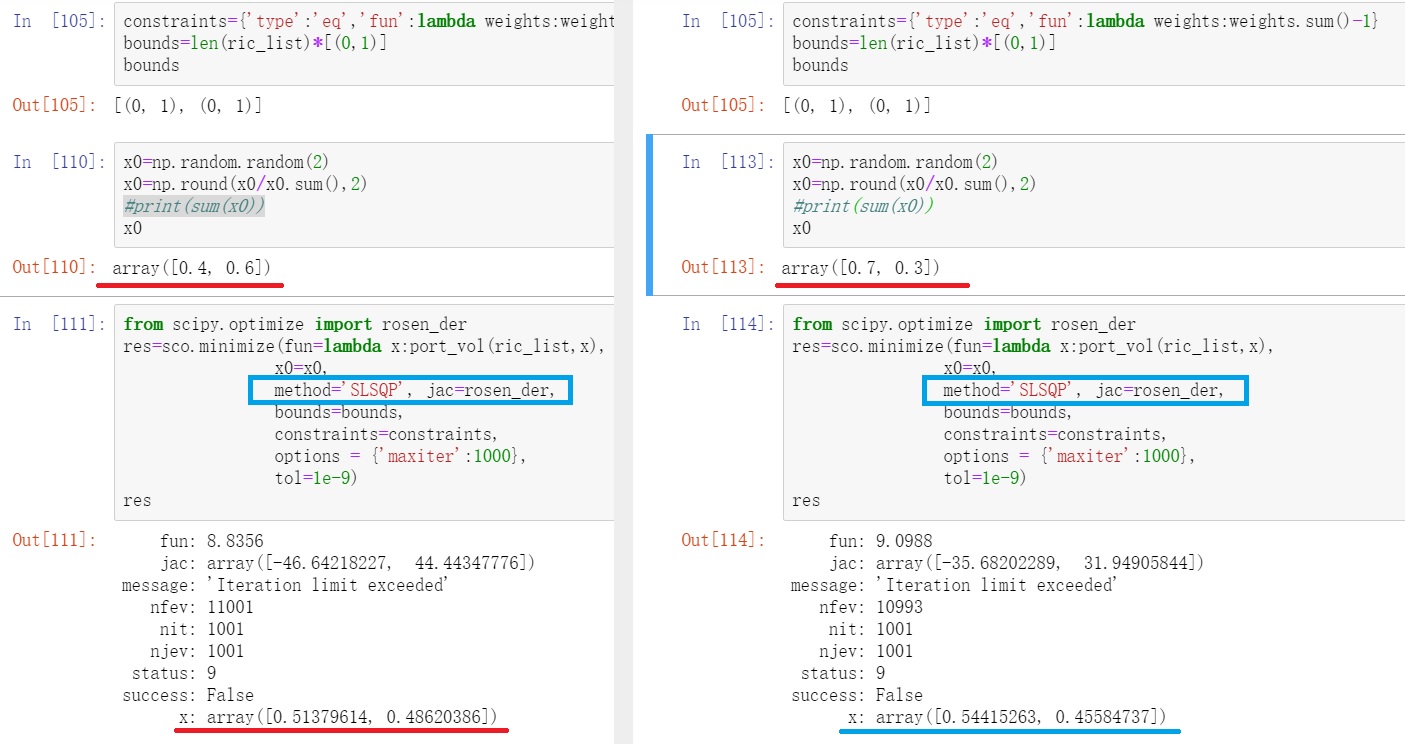When testing the code in video tutorial "Eikon Data API - Python Quants Tutorial 6 - Portfolio Theory", I found it's hard to have minimized volatility by the sample code demonstrated in the video.
The average weight as initial guess will always be the optimization result. If a portfolio consists 5 stocks, the optimized weighting would be [0.2,0.2,0.2,0.2,0.2]. Is there anything missed by me or in the video?




 Also pasted with version of each package below:
Also pasted with version of each package below:


